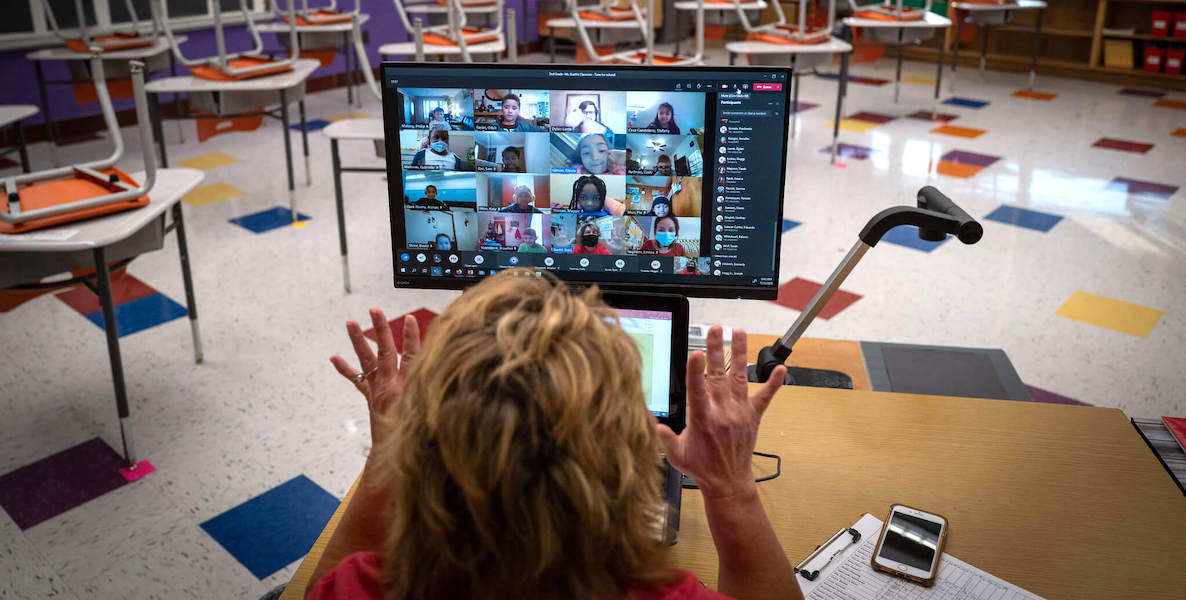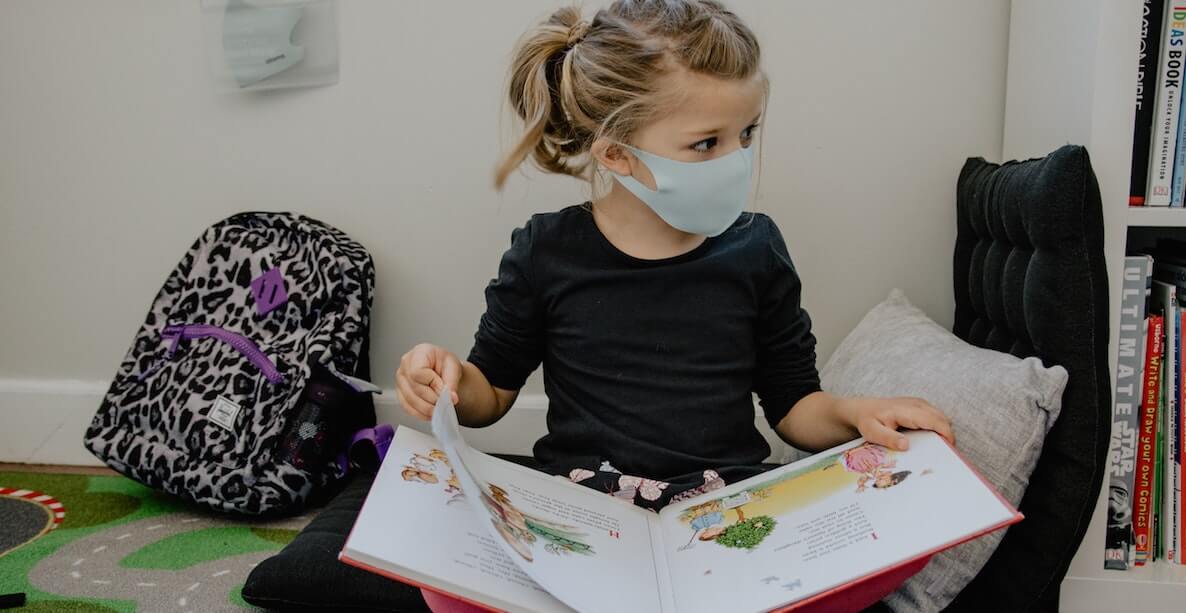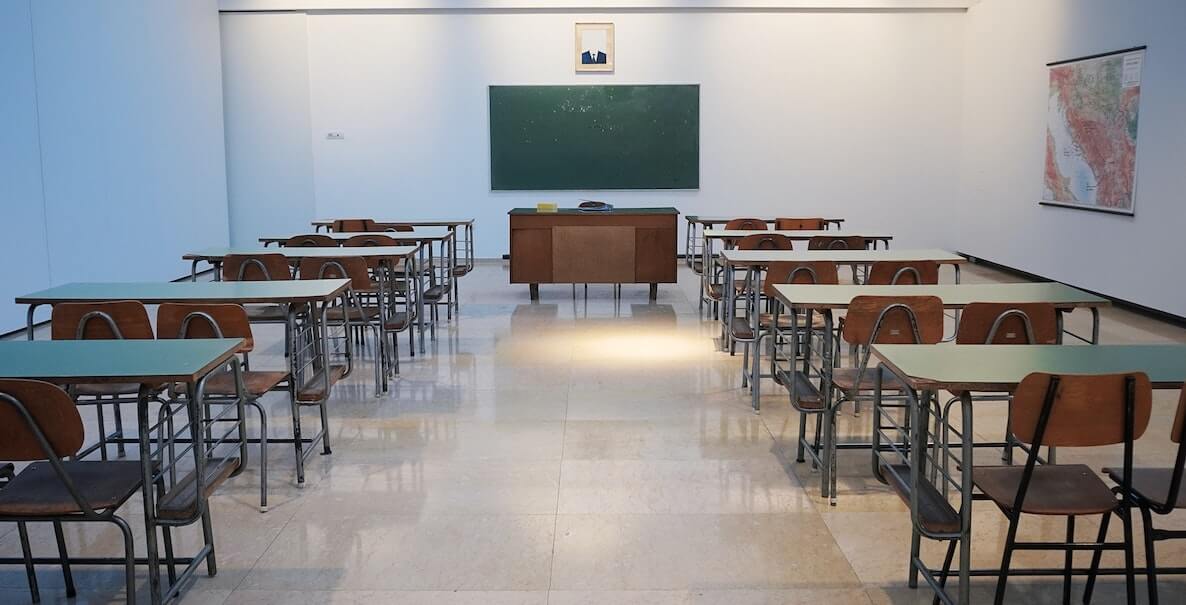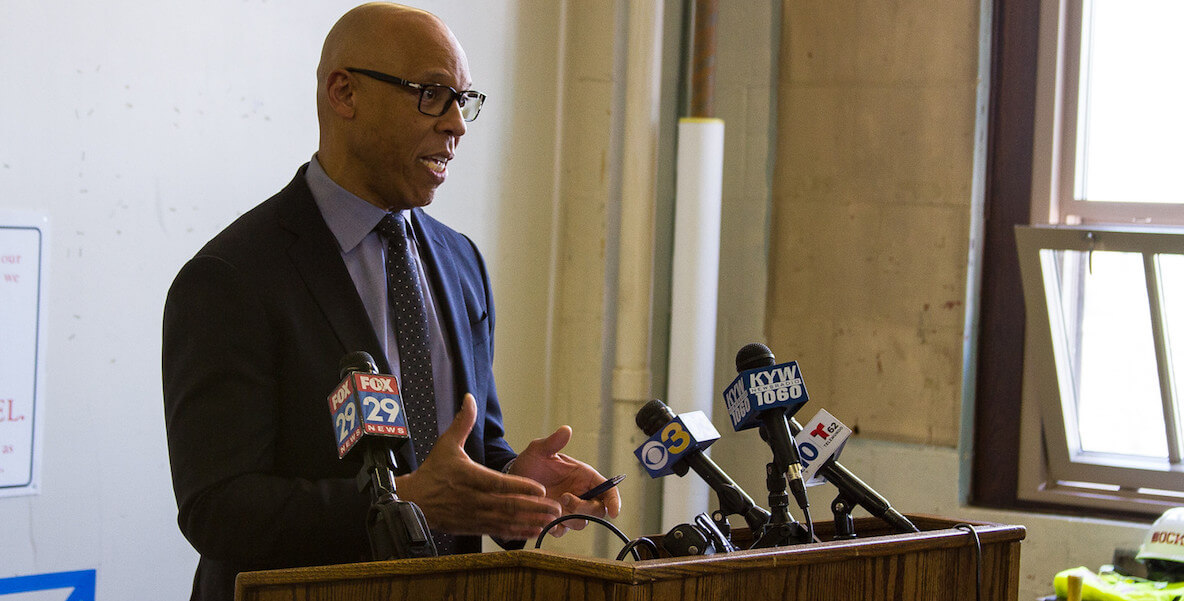In recent weeks, we’ve seen a couple of red-flag stories that ought to lead us to wonder whether our School District—the recipient of a $1.1 billion windfall from the federal American Rescue Plan—is really up to this moment. First came word that, despite such historic investment, the District had botched its summer school rollout. Apparently, coming out of the pandemic, they’d prepared for a 40 percent surge of attendance and were caught off guard when nearly double that amount of students—15,000—turned out. Staff shortages are rampant and many classroom supplies like paper, pencils and smartboard markers aren’t scheduled to arrive until late next month—right when summer school is ending.
Nothing to see here, the District spokesperson told the Inquirer. “It’s new, it’s taking some getting used to from all parties involved,” Monica Lewis said. “It’s not unlike activities you would see during the start of a new school year.”
MORE GOOD IDEAS ABOUT EDUCATION IN PHILADELPHIA
Let’s be clear: Other cities seem to have had no trouble figuring out how to do summer school. You really only planned for 7,000 summer students in a district of 140,000, after over a year of remote learning? Just who’s thinking through these things?
Then came news this week that the District posted a list of new start times for the fall, with most high schools starting at 7:30am, at least half-an-hour earlier than in pre-pandemic times, which flies in the face of the American Academy of Pediatrics recommendation that middle and high schools should start no earlier than 8:30am. The District was met with howls of backlash and promptly removed the posting of new start times from its website.
A string of management snafus
These unforced errors follow a string of management snafus during the tenure of Superintendent Bill Hite, as I’ve written about. Hite is a fine fellow and an able educator, but there will never be B-school papers written about his management expertise. (My favorite example of asleep-at-the-switch District management happened last year, when it came to light that the employee Hite publicly praised for her expertise in digital learning was simultaneously holding down a full-time chief academic officer gig in Ohio—you can’t make this stuff up.)
I’ve written before about how Mayor Kenney’s “back to normal” budget acts as if the year 2020 was just a collective fever dream. Well, are we about to experience deja vu all over again when it comes to school spending? How confident are you that the city’s historic windfall of federal funds will be competently invested in a way that takes advantage of this opportunity to rethink urban education?
We’ve been down this road before. Back in 2009, coming out of the Great Recession, the District received in excess of $400 million in stimulus funds. Under embattled Superintendent Arlene Ackerman, it promptly squandered it. The windfall was spent largely on salaries and connected consultants with their hands out; when the one-time funding ran out, the District underwent some 3,000 layoffs, including 50 percent of central office personnel and school nurses. (Incredibly, Ackerman said she never understood the budget numbers her staff provided to her. Again, try making this stuff up.)
“This is not lottery money, where you’re going to buy a big boat and a house and be set for life,” Uri Monson, the District’s chief financial officer, told me when I caught up with him this week. “I’ve been doing governmental budgeting for 20 years. The second hardest thing to do is to make cuts. The first hardest thing is to spend one-time money wisely.”
After speaking to District CFO Monson, I was comforted, but not necessarily excited. What’s missing is some rethinking when it comes to how we educate our kids.
Monson is in his sixth year with the School District; under his leadership, fiscal dysfunction and drama has become a thing of the past. When he first started—after helming the innovative zero-based budgeting revolution in Montgomery County under then-Commissioner Josh Shapiro —Monson raised eyebrows by releasing a five-year plan showing a $1-billion deficit. It presaged a penchant for straight-shooting and an embrace of accountability.
Monson has since brought the District’s fiscal house into order, even though it still suffers from a longstanding structural deficit that will now be papered over by the stimulus money for the next few years. He says the District has a “framework” for how to spend the American Rescue Plan money. It consists of four buckets: $350 million over four years on “educational recovery” coming out of the pandemic, including summer learning and tutoring; $325 million over four years in facilities improvement and new construction, which will add to previously planned capital investments to a potentially game-changing tune of $2 billion over six years; $150 million over four years addressing social and emotional needs of children, and nearly $100 million in educator investments, such as giving more budgetary discretion to principals and doubling the reimbursement for teacher purchased supplies.
Decades ago, Monson cut his teeth working for then-Vice President Al Gore’s Reinventing Government project, which shrunk the size of the federal government to 1960 numbers while the Clinton administration made big investments in R&D and created 20 million jobs. Borrowing from Clinton phraseology at the time, Monson has a guiding principle scrawled on a white board in his District headquarters office: It’s The Implementation, Stupid!
An emphasis on the nuts and bolts of smart policy implementation is comforting coming from inside a historically sclerotic bureaucracy. But Monson is the District’s numbers guy—not its visionary. The framework he outlines seems fine, but appears to simply spend more on a lot of stuff the District has already been doing. Is that enough?
“We need a Master Plan”
“I’ve said often, we need a Master Plan,” says City Councilmember Allan Domb. “You want to take on poverty and grow jobs? We should be teaching financial literacy, we should be teaching tech, we should be teaching entrepreneurship—District-wide.”
A few years ago, Domb enlisted the help of the Federal Reserve Bank of Philadelphia and has provided financial literacy training to 178 public school teachers, which reaches some 5,000 students. Now, he suggests, the moment is ripe to scale such experiments and to think boldly. “We should be building and financing new schools in neighborhoods, which invests in our kids and raises the value of real estate throughout the city. But all of that requires long-term thinking, which there may not be an appetite for.”
This week, we gathered some educational disruptors for a terrific public discussion about reimagining education. Among them was Dr. Heidi Ramirez, the former SRC Commissioner who went on to serve as the chief academic officer for Milwaukee and Memphis public schools, and who has returned to Philadelphia. She shares a concern that, by doing what has always been done, many districts are in danger of not capitalizing on this moment.
“At a time when most of us are looking forward to getting back to normal, the last 18 months have confirmed that our students and schools need and deserve something very different,” former SRC commissioner and Milwaukee and Memphis Chief Academic Officer Heidi Ramirez told me.
“At a time when most of us are looking forward to getting back to normal, the last 18 months have confirmed that our students and schools need and deserve something very different,” she told me. “And we now have an opportunity unlike any other to significantly change the learning experiences of our most marginalized children. We can have schools that are acutely student-centered, where everything from the physical space to materials, instruction, and hallway interactions reflect a systemwide commitment to rigor, relevance, relationships and respect. What we need now is a new vision and aligned, ambitious plans—and not just collections of strategies, constituent concerns, and budget allocations—but clear goals and priorities (including things we say no to), and a pathway to get there that is clear about what we can do now and what we will build toward. Large and small, public and private, urban and rural systems around the country have already proven we can do business differently. For the sake of our students, let’s not get back to normal.”
Ramirez went on to cite chapter and verse about what we could be doing. Focusing on child literacy by training teachers in the science of reading and a robust “aligned K-16 career readiness” strategy, for example. But I kept coming back to that phrase: Let’s not get back to normal.
That’s the real danger here, folks. That, despite the windfall, we’ll just keep treading water, just keep celebrating incremental progress. Aren’t you tired of a graduation rate uptick from 65 to 69 percent over the course of Hite’s tenure eliciting Mission Accomplished-like high-fives?
Progress elsewhere in the United States—and Cuba
There are school districts that, while not exactly revolutionary, seem to be open to trying new things these days:
- In Ohio, the Cleveland Metropolitan School District invited teachers to submit grant proposals for enrichment classes to teach during summer school. The District approved 80 proposals, and now elementary school students are taking photography classes and high schoolers are learning the intricacies of finance.
- While Philly has patted itself on the back for (finally!) achieving a one-to-one ratio of student to Chromebook, other districts have targeted a two-to-one ratio as the gold standard, because they’ve learned that you just may be putting a student in harm’s way by requiring them to travel to and from school when everyone knows they’ve got an expensive piece of technology in their backpack.
- The Guilford County, North Carolina, School District is building a new $35 million staff training and family education facility, and has recruited an army of math and science grad students from HBCUs; they work closely with the students and the students’ teachers as tutors, an especially thought-through policy. In addition to benefitting from the actual tutoring, Guilford County students of color are now in regular contact with classroom authority figures who look like them. And, from the District perspective, the program allows them to effectively recruit a next generation of teachers.
After speaking to Monson, I was comforted, but not necessarily excited. What’s missing, as both Domb and Ramirez indicate, is some rethinking when it comes to how we educate our kids. And we only need to look 90 miles off the coast of Florida for an inspiring case study.
I’m not one to usually sing the praises of Fidel Castro, but in 1961 the Cuban dictator unleashed the Campaña Nacional de Alfabetizacion en Cuba—the Cuban Literacy Campaign. In the first year after the Revolution, Castro and Che Guevara made learning how to read part of a political movement. At the time, the illiteracy rate was 11 percent in Havana and 42 percent in the countryside. They actually closed the schools and sent brigadistas—literary brigades of teachers and students—away for a two-week crash course and then out into the peasant fields to build schools and teach. Students lived with host families, tutoring the adults and their children in reading and writing.
“You will teach, and you will learn,” Castro told the 100,000 volunteers. Newspapers carried photos of each one, student and teacher alike, contributing to the widespread sense of mission. (Today, in a museum in the western suburbs of Havana, thank you notes to Castro from formerly illiterate peasants are on display). Within a year, 707, 212 adults had learned to read and write.
The country’s illiteracy rate dropped from 25 percent (the same as ours!) to less than 4 percent—within a calendar year. Today, Cuba still has its problems, as recent protests suggest. But education, which is free at every level, ain’t one of them.
The Cuban Literacy Campaign was the most ambitious and successful reading and writing movement in world history. Today, Cuba’s literacy rate is 99.8 percent, higher than in the United States and Great Britain.
Cuban Schools open at 6:30 a.m. and close 12 hours later, providing morning and after-school care. There is no truancy and hardly any misbehavior. Teachers make house calls if kids are too sick to make it to school. Cuba spends 10 percent of its budget on education, compared to 2 percent of the United States’ federal budget. The result is that 60 percent of Cubans have some level of higher education.
The Cuban Literacy Campaign was the most ambitious and successful reading and writing movement in world history. Today, Cuba’s literacy rate is 99.8 percent, higher than in the United States and Great Britain. True, it hasn’t led to economic growth. In this country, we tend to think of education as the key to expanding opportunity. But Cuba is mired in poverty despite its stellar education system. Turns out, education isn’t enough; free markets are also needed to create jobs.
But think about what Castro did in 1961. Obviously, I doubt that Domb, Ramirez and other civic leaders would be on board for replicating the particulars of the Cuban experiment, but might there be an object lesson for us in it nonetheless? Castro seized on a moment full of revolutionary fervor and changed the course of what education was and ought to be in his country.
There wasn’t much that ol’ Fidel and John F. Kennedy agreed on, but in the then-senator’s 1959 remarks at the convocation of the United Negro College Fund in Indianapolis, he said, “When written in Chinese, the word ‘crisis’ is composed of two characters—one represents danger and one represents opportunity.”
Kennedy was suggesting that, throughout our history, times of crisis have always sparked a heightened appetite for big ideas. Think of it: FDR’s social programs, LBJ’s civil rights laws and even George W. Bush’s creation of the Department of Homeland Security were all examples, to varying degrees, of leadership in uncertain times striving to meet its moment with boldness and ingenuity.
Wouldn’t it be cool—and an inspiring message to our students—if Philadelphia thought and acted the same way?
Header photo courtesy of Philadelphia City Council









